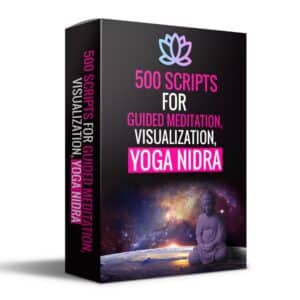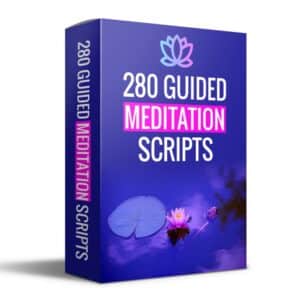Embarking on a journey to overcome substance abuse is a courageous step towards reclaiming your life and well-being. Mindfulness, the practice of being fully present and engaged in the moment without judgment, can be a powerful tool in your recovery process. It helps by reducing stress, enhancing emotional regulation, and breaking the cycle of addiction. This worksheet is designed to introduce you to mindfulness exercises tailored specifically for individuals in substance abuse recovery groups, aiding in your journey towards healing and self-discovery.
Understanding Mindfulness in Recovery
The Role of Mindfulness in Overcoming Substance Abuse
Mindfulness can help you navigate the challenges of recovery by teaching you to observe your thoughts and feelings without reacting automatically. It encourages a compassionate and nonjudgmental approach to your experiences, helping you recognize triggers and cravings without succumbing to them. By cultivating mindfulness, you can develop healthier coping mechanisms and a deeper understanding of your patterns of substance use.
Mindfulness Exercises for Recovery
1. Mindful Breathing
This simple exercise can help center your thoughts and reduce cravings or anxiety.
- How to Do It:
- Find a quiet, comfortable place to sit or lie down.
- Close your eyes and take a moment to notice the natural rhythm of your breath.
- Focus on the sensation of air entering and leaving your nostrils, or the rise and fall of your chest.
- If your mind wanders to thoughts, cravings, or worries, gently acknowledge them and return your focus to your breath.
- Practice this for 3-5 minutes initially, gradually increasing the duration as you become more comfortable with the practice.
2. Body Scan Meditation
This practice encourages awareness and acceptance of bodily sensations, which can be particularly beneficial in identifying and managing physical cravings.
- How to Do It:
- Begin in a comfortable seated or lying position. Close your eyes and take a few deep breaths to relax.
- Starting with your toes, focus your attention on each part of your body in turn, noticing any tension, discomfort, or other sensations.
- If you encounter areas of tension, imagine your breath flowing into and out of these areas, bringing relaxation.
- Continue moving your focus up through your body, until you reach the top of your head.
- Throughout this exercise, if you notice cravings or discomfort, observe them without judgment and gently return your attention to the body scan.
3. Mindful Observation
This exercise helps connect you with the present moment, reducing the power of triggers or cravings.
- How to Do It:
- Choose an object from your immediate environment—a leaf, a flower, a cup, or anything else that catches your eye.
- Spend a few minutes simply observing the object. Notice its colors, shapes, textures, and any other qualities.
- Focus all your attention on this object, letting thoughts and distractions pass by without engaging with them.
- If your mind wanders, gently bring your focus back to the object of observation.
4. Mindful Walking
Walking meditation combines mindfulness with physical activity, offering a way to be present while also engaging your body.
- How to Do It:
- Begin walking at a slow, but natural pace. Concentrate on the sensation of your feet touching the ground with each step.
- Notice the movement of your legs and the rest of your body. Observe how it feels to walk, the rhythm of your steps, and any sensations you experience.
- If your mind drifts to thoughts or worries, gently redirect your attention back to the act of walking and the sensations associated with it.
Incorporating Mindfulness into Your Recovery
Creating a Daily Mindfulness Practice
- Dedicate a specific time each day for mindfulness practice. Start with short sessions, gradually increasing as you feel comfortable.
- Keep a journal to reflect on your experiences with mindfulness. Note any changes in your cravings, emotional states, or overall well-being.
Mindful Moments Throughout the Day
- Use routine activities, such as eating or showering, as opportunities to practice mindfulness. Focus fully on the sensations and experiences of the activity.
- Develop a mindfulness cue, such as a bell or a reminder on your phone, to pause and practice mindful breathing several times throughout the day.
Embracing Mindfulness in Recovery
Mindfulness is not a quick fix but a powerful tool in your recovery toolkit. It offers a way to live more fully in the present, understand and manage cravings, and cultivate a deeper sense of peace and well-being. As you continue to practice mindfulness, you may find it becomes a vital part of your journey towards recovery and a healthier, more balanced life. Remember, each moment is a new opportunity for mindfulness and healing.
Discover the transformative power of mindfulness with our carefully curated collection of printable mindfulness worksheets and exercises. Each worksheet is designed to guide you through exercises that cultivate awareness, reduce stress, and promote emotional well-being. From grounding techniques to breathing exercises, these tools are your allies in navigating the complexities of daily life with a sense of calm and presence. Whether you’re a beginner or looking to deepen your practice, these printable resources are tailored to meet your needs.
Save up to 88% with our Bundles
Instant Download
- Digital Download
- Digital file type(s): 1x PDF
- Your files will be available to download once payment is confirmed

![Printable Mindfulness Exercises & Worksheet for Substance Abuse Groups [PDF]](https://guidedmeditationscript.com/wp-content/uploads/2024/02/Printable-Mindfulness-Exercises-Worksheet-for-Substance-Abuse-Groups-PDF.jpg)
![Printable Easy Mindfulness Exercises & Worksheet for Adults [PDF]](https://guidedmeditationscript.com/wp-content/uploads/2024/02/Printable-Easy-Mindfulness-Exercises-Worksheet-for-Adults-PDF-300x150.jpg)
![Printable Mindfulness Exercises & Worksheet for Enhancing Mindful Communication [PDF]](https://guidedmeditationscript.com/wp-content/uploads/2024/02/Printable-Mindfulness-Exercises-Worksheet-for-Enhancing-Mindful-Communication-PDF-300x150.jpg)
![15,000 Positive Affirmations Bundle [PDF]](https://guidedmeditationscript.com/wp-content/uploads/2024/01/15000-Positive-Affirmations-Bundle-PDF-1-300x300.webp)

![150 Best Hypnosis Scripts [PDF] Bundle](https://guidedmeditationscript.com/wp-content/uploads/2023/11/150-Best-Hypnosis-Scripts-PDF-Bundle-300x300.jpg)

![200 Printable Mindfulness Exercises Worksheets Bundle [PDF]](https://guidedmeditationscript.com/wp-content/uploads/2024/02/200-Printable-Mindfulness-Exercises-Worksheets-Bundle-PDF-300x300.jpg)


![Printable Mindfulness Worksheet & Exercises for Athletes [PDF]](https://guidedmeditationscript.com/wp-content/uploads/2024/02/Printable-Mindfulness-Worksheet-Exercises-for-Athletes-PDF-300x150.jpg)
![Printable Mindfulness Worksheet & Exercises for Individuals with Intellectual Disabilities [PDF]](https://guidedmeditationscript.com/wp-content/uploads/2024/02/Printable-Mindfulness-Worksheet-Exercises-for-Individuals-with-Intellectual-Disabilities-PDF-300x150.jpg)